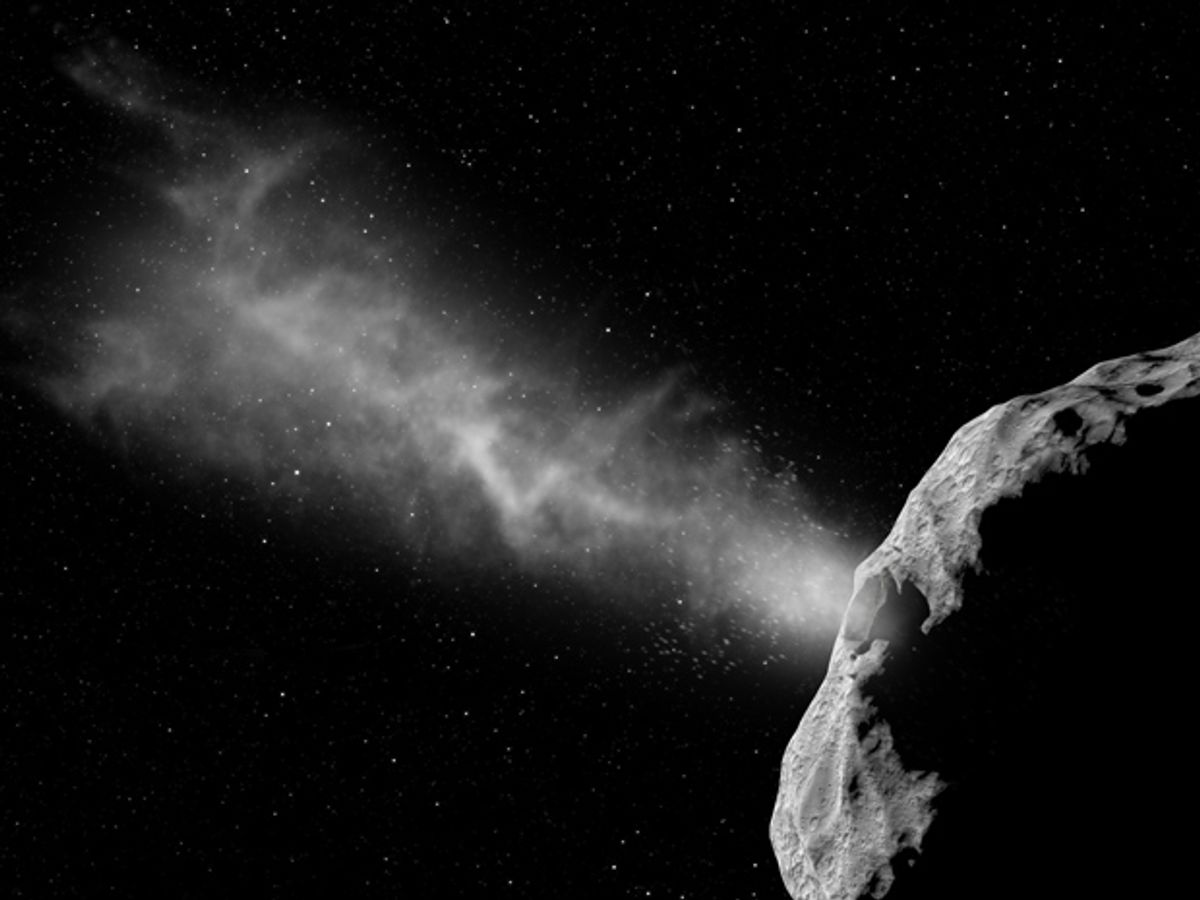The odds of you personally getting killed by an asteroid are not that high: About 1 in 75,000 seems to be a reasonably accurate number based on available data. The thing about asteroids, though, is that while it’s very unlikely that Earth is going to be hit by one capable of doing significant damage, if it does happen, it’s going to trigger bad times for a lot of people—millions, if not billions. That 1 in 75,000 means that you're almost twice as likely to die from a globally destructive asteroid impact as you are from either an earthquake or a lightning strike.
Does this mean we should panic? I mean, sure, go ahead, if you’ll feel better afterwards. But really, what it means is this: if we can agree that it makes sense to allocate resources towards reducing the risk of people getting killed by things in proportion to the likelihood of those things actually occuring, then asteroid detection and intervention is definitely worth our attention. Probably more so than some other things. Like terrorism. But I digress.
The European Space Agency and NASA have a good understanding of the importance of finding and (hopefully) avoiding asteroids, and they’re joining forces on an Asteroid Impact & Deflection Assessment mission called AIDA. The objective of this mission is awesome: to slam a spacecraft into an asteroid with as much force as possible, and see what happens.
As you may remember, this is not the first time that we’ve deliberately crashed a spacecraft into an asteroid just to see what would happen. In 2005, the Deep Impact spacecraft launched a 370-kilogram copper-cored impact vehicle at the 6-km-wide comet Tempel-1, and then hung back to watch the show.
That impact changed the orbit of the comet by something like 10 centimeters. Not much, obviously, but it’s a start.
The AIDA mission has a similar structure to Deep Impact. It has two primary components: an observatory called AIM (Asteroid Impact Mission) being developed by ESA, and an impactor called DART (Double Asteroid Redirection Test) being developed by NASA. The AIM observatory, which will be launched first, won't be hugely complicated or expensive. It's expected to carry some cameras and radar and communications gear and stuff like that, and also a boxy little lander based on DLR’s MASCOT. There will be room for a few cubesats, too.
AIM will launch out towards a near-Earth asteroid called Didymos. Didymos was chosen because it's super easy to reach from Earth, and at about 800 meters in diameter, it’s the size of something that we'd probably want to try and avoid. Didymos also has a little moon (technically, it’s a binary asteroid) which has a diameter of 150 m. The moon, known as Didymoon, is going to be the target asteroid, because any change in its orbit will be easier to measure, and it’s actually more effective to move the moon, and then let the moon’s new orbit shift the orbit of the binary system as a whole.
NASA will be sending DART on a much more direct course since it won't have to sneak into orbit around Didymos. Instead, it’ll smack into Didymoon at just over 6 kilometers per second (13,400 miles per hour), abruptly converting most of its roughly 300 kg of mass into a stupendous amount of energy. The hope is that when all the dust settles, AIM will be able to measure a change in Didymoon’s orbital velocity of about half a millimeter per second. Given enough time, even that minuscule a shift could be signficant.
You don’t have to worry about this tinkering with Didymos’ orbit, though. As NASA points out, “it is important to note that the target Didymos is not an Earth-crossing asteroid, and there is no possibility that the DART deflection experiment would create an impact hazard.” Good to hear. If everything runs on schedule, AIM will launch in 2020, and the DART impact will happen in 2022.
This direct approach is just one way that we might be able to deflect an asteroid from Earth impact; NASA is going to try a gravity tractor in 2020, for example. If (when) we need to put these techniques into practice, the one we choose will depend on how long we have before impact, the size of the asteroid, where it is, what it’s made of, and all kinds of other factors that we can’t know in advance. All we can do is experiment and practice, because when the time comes, a failure of the technologies that NASA, ESA, and others are developing could mean anything from the obliteration of an entire city to the collapse of civilization, to the total extinction of the human race.
Evan Ackerman is a senior editor at IEEE Spectrum. Since 2007, he has written over 6,000 articles on robotics and technology. He has a degree in Martian geology and is excellent at playing bagpipes.




